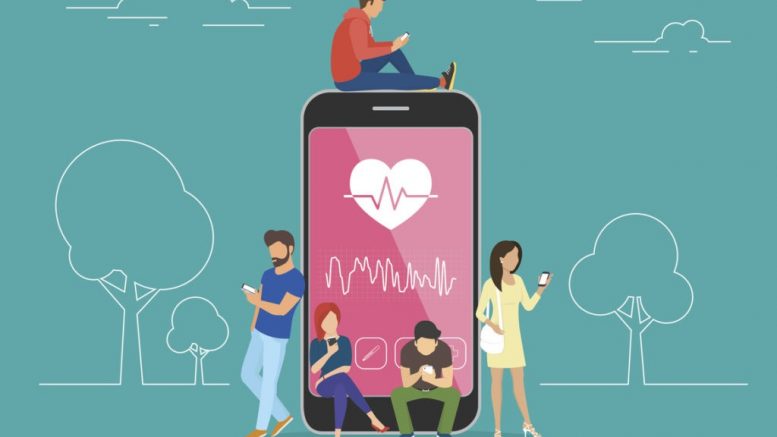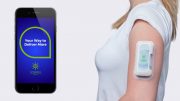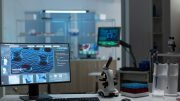When it comes to using technology to boost clinical trial recruitment and retention, the possibilities are practically endless.
But despite the increasingly prevalent role of patient-centric technology in research, its ability to improve engagement and deliver significantly greater value throughout an entire study has yet to be fully realised on a wide scale.
Jeff Lee, Product Management VP, Patient Engagement and eConsent at CRF Bracket, explains why it’s time to embrace integrated, disruptive solutions that truly address patients’ needs, and looks at how a view of misperceived complexity and a lack of joined up thinking might be holding us back from measurable benefits.
Delivering end-to-end engagement
Sponsors and researchers are heavily reliant on ‘engaged’ volunteers to take part in their studies, but the issues surrounding recruitment and retention are well documented.
Three-quarters of trials never reach their sign-up targets,1 and even those that do face significant challenges keeping people from dropping out. With so few patients participating, ensuring all collected data is of the highest possible quality is paramount to the success of any study.
The industry has come to the realisation that the key to solving this problem is end-to-end engagement.
From gaining informed consent, making sure volunteers have the understanding they need to make an informed participation and commitment decision, to securing the highest quality data endpoints, patients need to feel invested in the process. And many sponsors and CROs have risen to the challenge by partnering with technology companies focused on clinical research.
Technology opportunities are (literally) in our hands
Patients are people, and people are consumers. In our consumer lives, we have become used to, if not reliant on, apps and other technology that goes where we do on our mobile devices. Technology has simply become an integrated and integral part of the workflow of our daily lives, to the point we only notice it when it is absent. Bringing clinical trial commitments, documents, information and data into this friendly and accepted frame, from recruitment through closeout and beyond, can transform the patient experience, data quality and operational efficiency of your global programs.
A few examples:
eCOA: It is well documented that electronic clinical outcome assessment (eCOA) systems and wearable trackers capture treatment-related improvements that matter to patients, at the same time as building engagement. They also generate effective real-world evidence which regulatory approvals increasingly demand.
Biometric Devices: Technology offers novel approaches to treatment and trial conduct as wearables and connected devices collect richer data which supplements understanding of treatment effects. This leads to study design changes and the development and validation of new gold-standard clinical endpoints, all of which demand new ways to train and monitor the researchers who collect data to ensure measurements and insights are understood, consistent and, crucially, reliable.
eConsent: The consenting process is now being seen as a prime opportunity to help potential study patients feel invested in the process, with increasing interest now in how trial participation can be simplified. Patient-centric technologies, such as informed eConsent, ensure study information is conveyed effectively and in a more engaging manner, even enabling some study visits to be conducted remotely to reduce travel requirements.
Patient Engagement: Technology can broker study transportation when needed, provide study apps and communications to help keep patients engaged and prepared during the study, and even share lay summaries of study results and personal data to provide additional value.
Study Logistics: Not all technology needs to be patient-facing in order to be patient-centric – some solutions that exist in the background ensure a smooth experience for patients, sites and study teams to run a faster, seamless trial. Enterprise-wide intelligent supply management, forecasting and planning, and interactive response technology (IRT) are revolutionising study management and supply chain processes. Algorithms that accurately calculate required study supply levels make sure volunteers have exactly what they need, where and when they need it, enabling companies to reduce costs, maintain safety and ensure compliance across territories to focus on the next life-saving drugs.
Each one of these technology advances contributes toward improving clinical trial practice and ultimately benefits patients by facilitating the process and experience, whilst serving to engage and educate patients. This certainly contributes to earlier communication and understanding of treatment effects which ultimately speeds drug development to the benefit of all.
Intelligent streamlining to minimize added burden
Despite their individual advantages and value, when taken together this wide array of technologies can place an increased burden on sites and volunteers alike. They are surrounded by technology all the time, and they expect and demand a seamless experience without a dozen different logins and interfaces. Therefore, it is the responsibility of technology providers (and their sponsor and CRO customers who keep them accountable) to treat sites and patients as any forward-thinking consumer technology provider would. App developers would never ask their customers to carry a single phone for each and every app, and likewise we must utilize tools such as single sign-on (SSO) to provide a coherent experience that optimizes and organises the experience for sites and patients around the world. Only by providing technology of value without increasing burden will we truly achieve our goals of transforming clinical research on a global scale.
Patients expect technology
Findings of a study CFR Bracket conducted in conjunction with PMG Research found that 31% of patients2 would be more likely to participate in a study if they knew that a mobile app would be available. It also highlighted the importance of that app being easy to use.
The array of technologies also places increased burden on sites. In a study where the patient is presented disparate technologies from different providers, a great strain is placed on the site staff to carefully train the patient on each technology. This demands a new skill set or role to emerge at sites This role can be thought of as a “Technology Navigator” which can help non-technical staff confidently harness diverse technologies for each study. The industry needs to adapt to help sites deal with this technology explosion and we are witnessing sites today leaning more than ever on technology help desks as they struggle to provide the patient all the training they require.
So, whilst technology is being exploited for patient-centred study design, focused on the actual protocol-driven procedures, more can be done to actually help the patient make their way through the study, which is the area that Sponsors are now focussing their attention toward.
Integrated solutions
Leading technology innovators are tackling this problem. At CRF Bracket, we are involved in integrating several third-party services into one app, creating one simple interface for patients and another for sites and study teams.
By combining ePRO and eCOA data capture, eConsent, patient engagement, patient payments, courier and travel services and home health nursing – whether it is our own solutions or from a trusted third-party such as Uber or Greenphire – such solutions eliminate the need for patients to interact with overwhelming numbers of notifications from different websites, apps or SMS alerts services.
Combining as many solutions as possible into a single app not only eases the logistical and daily burdens of participation, it also meets the expectation of a quality trial. Such seamless interaction provides systems that reflect and respect patient-centricity and build confidence in how well studies are managed.
Integrated end-to-end systems, compatible platforms and connected devices also increase visibility and trial management for sites and sponsors. And by combining these technologies into a single project delivery team, the site can also receive streamlined/coherent training, which makes them a more effective educator to the patient
Giving your trial the very best chance of success
The industry has seen an explosion of innovation in the adoption of patient-facing technology applied across research, routine care and personal wellness, as well as enterprise-wide with fully integrated forecasting, planning and inventory management.
Choosing integrated, supported solutions can help sponsors fully embrace the patient-centric opportunities that can often be the most pivotal factor in the success of a study.
Ensuring the pharma industry has a more palpable feel for what patients need in order to execute the best possible study experience, from end-to-end, is where the best in class technology disruptors are now operating, pushing the boundaries beyond industry standard features into an advanced patient-centric realm, improving the patient experience and increasing ROI for sponsors and CROs.





